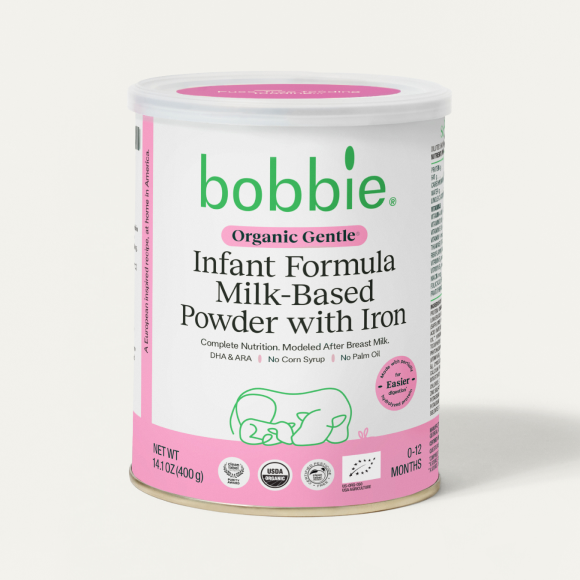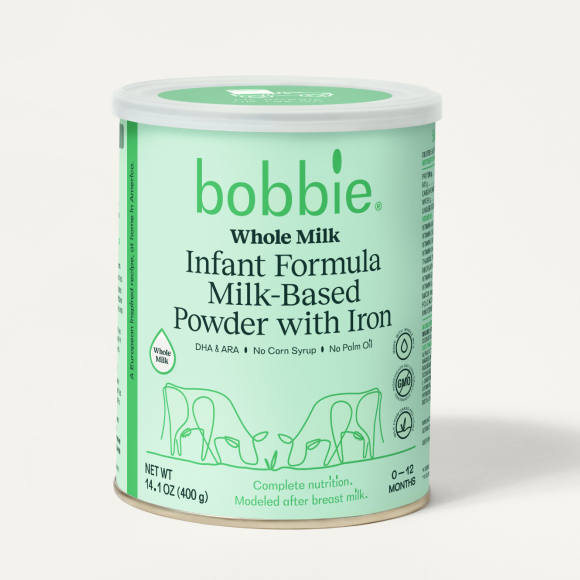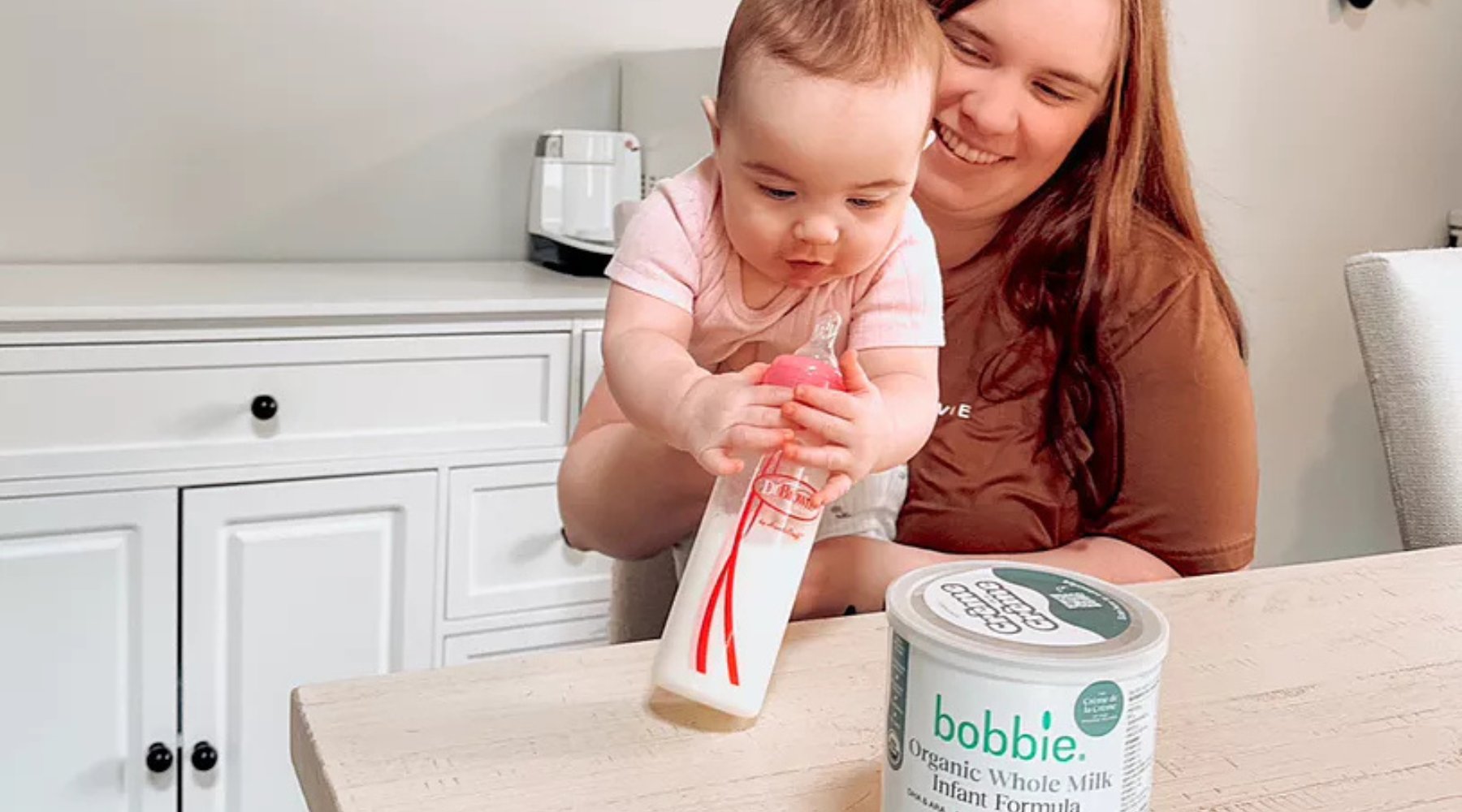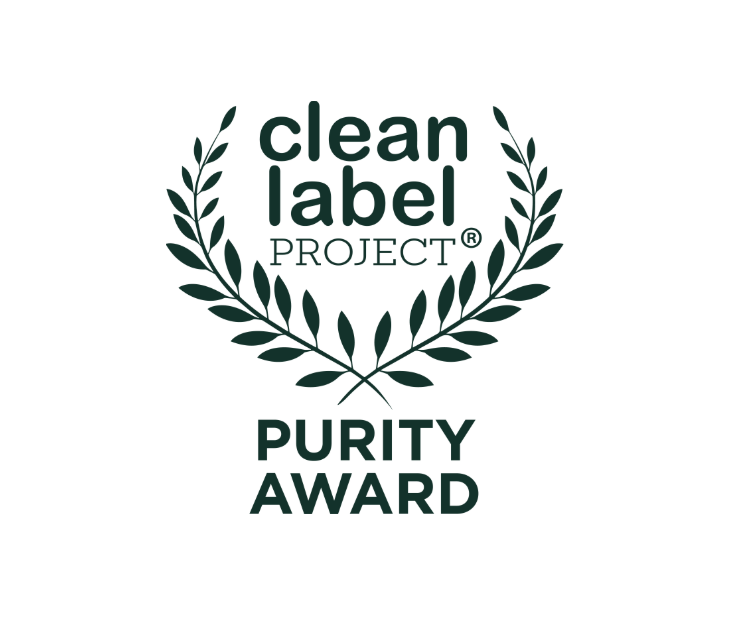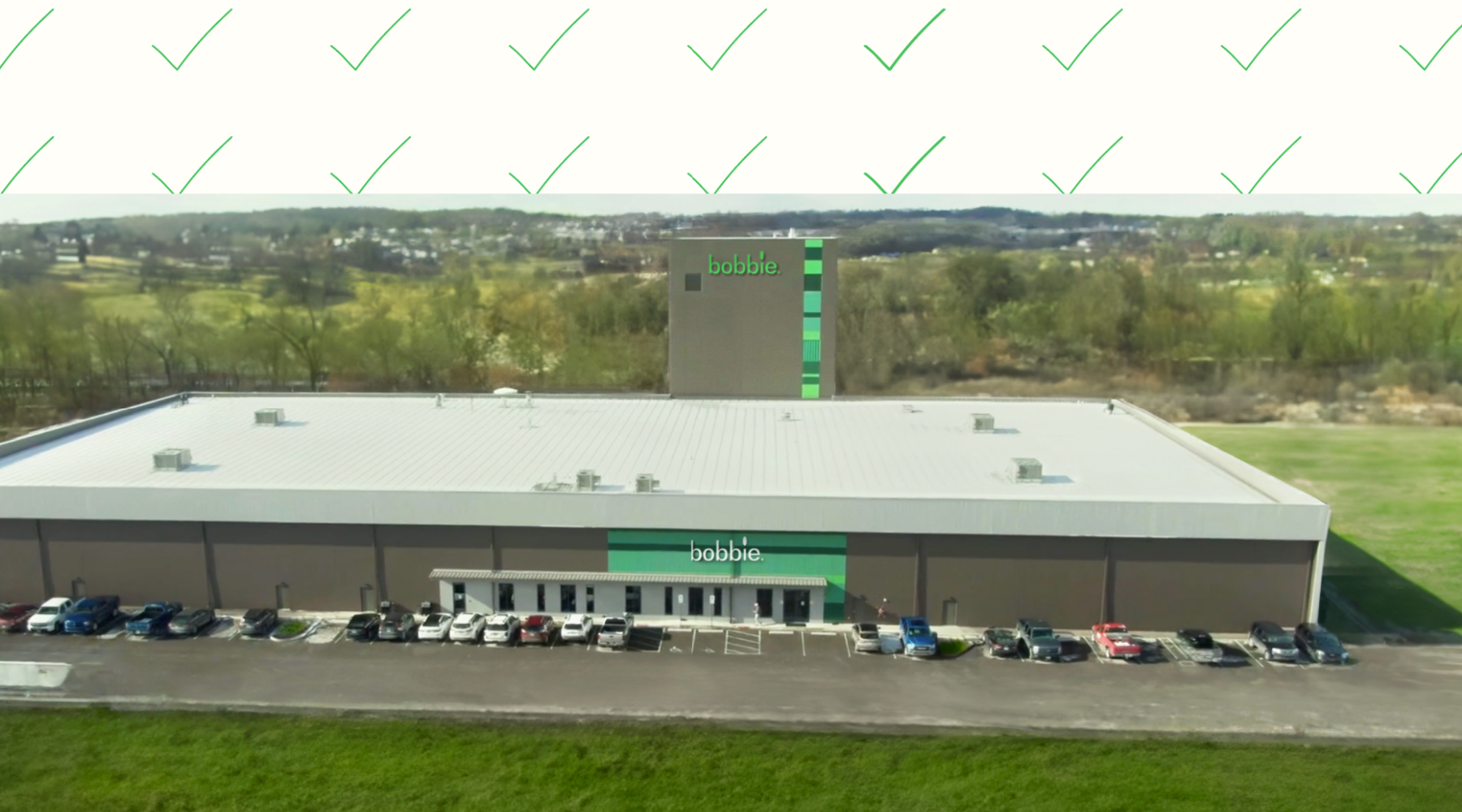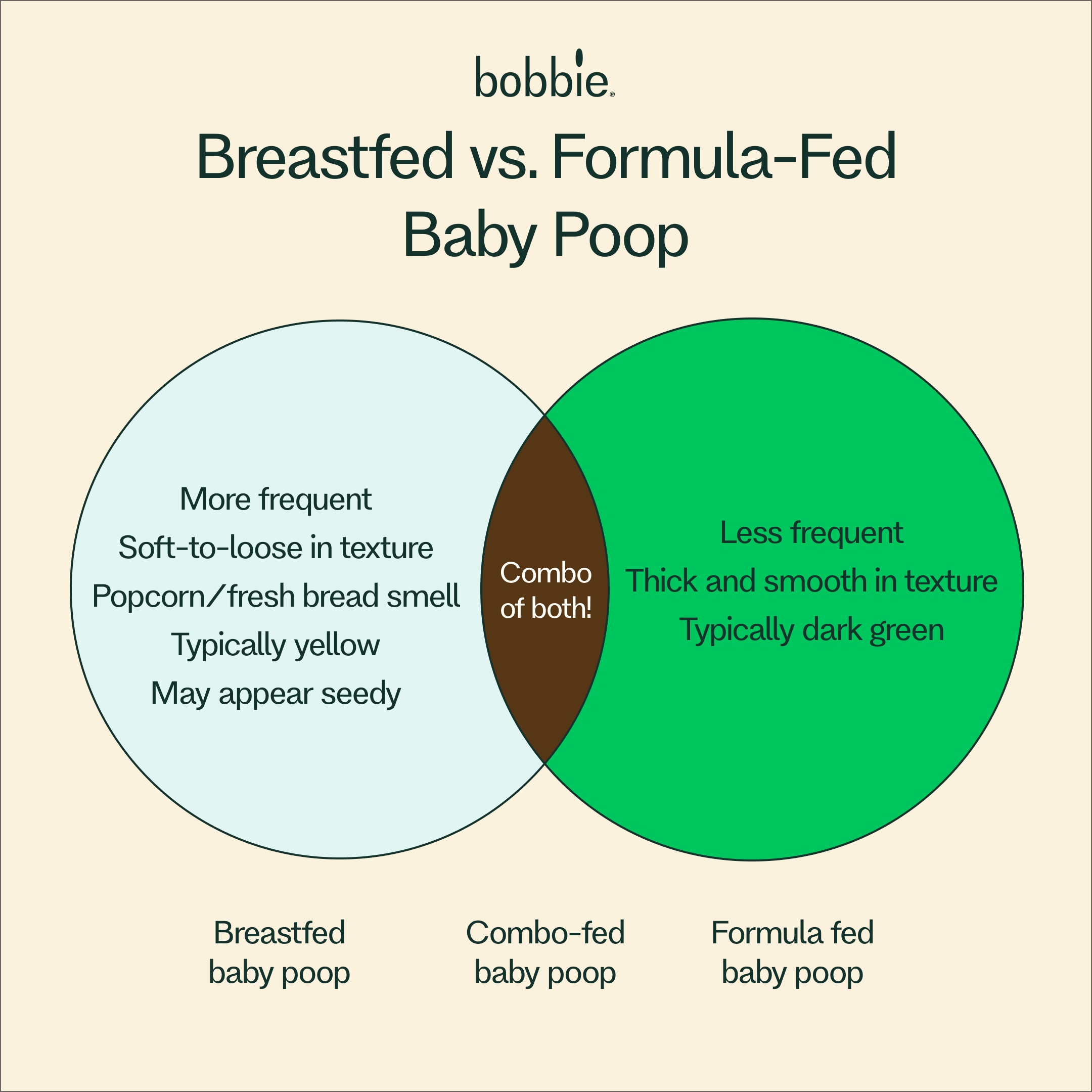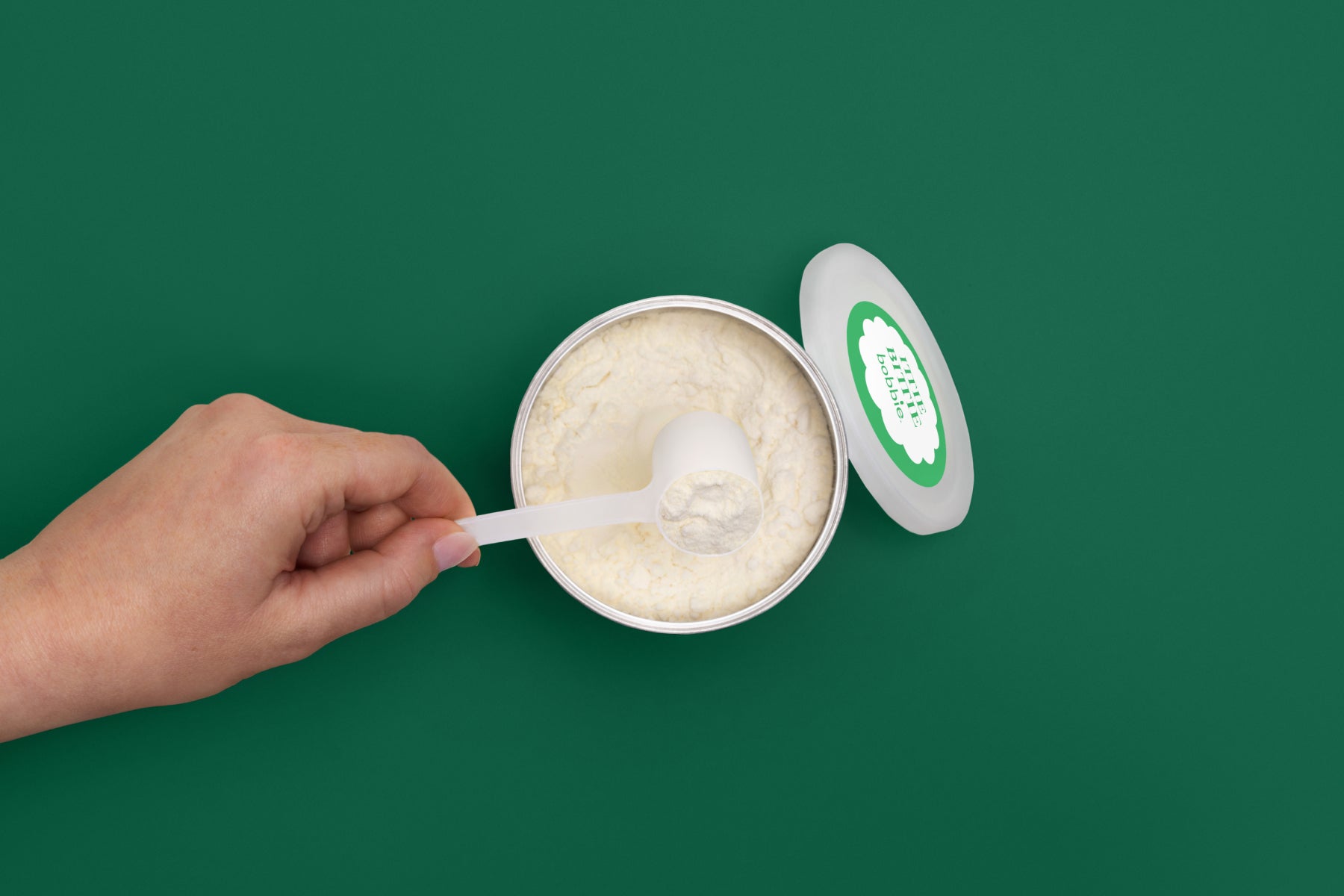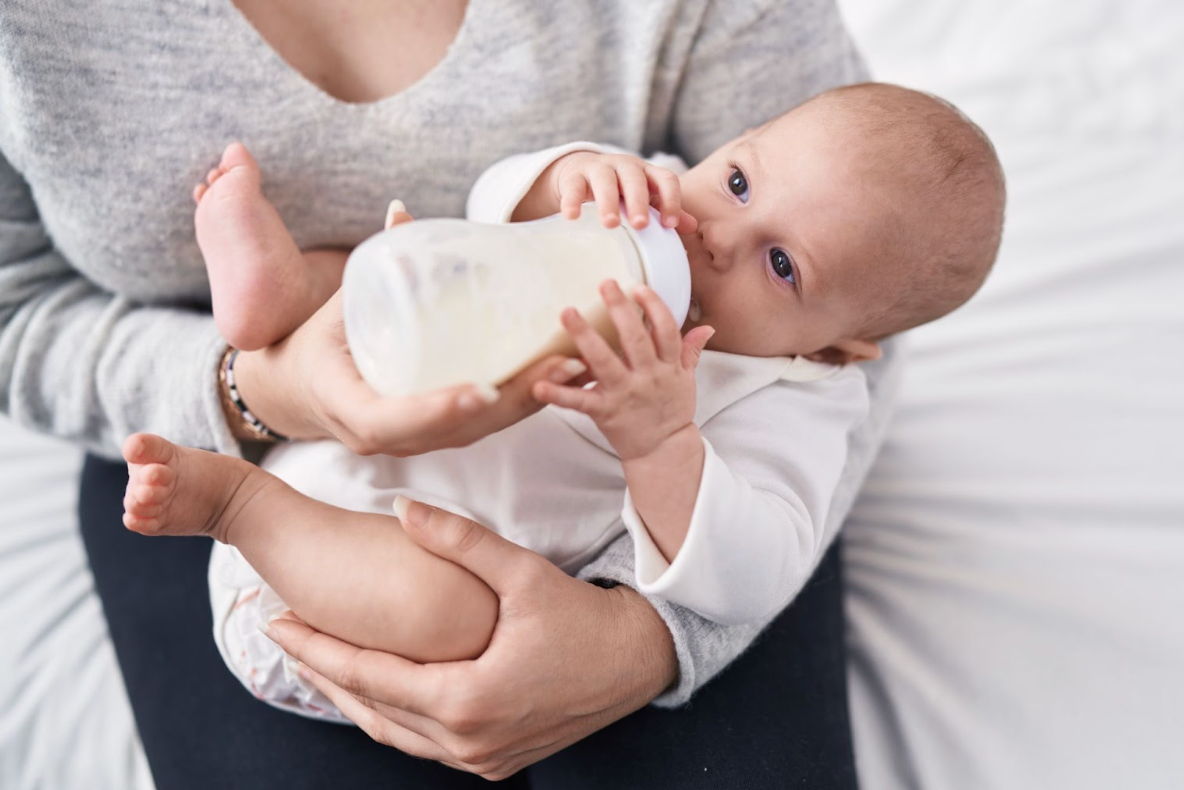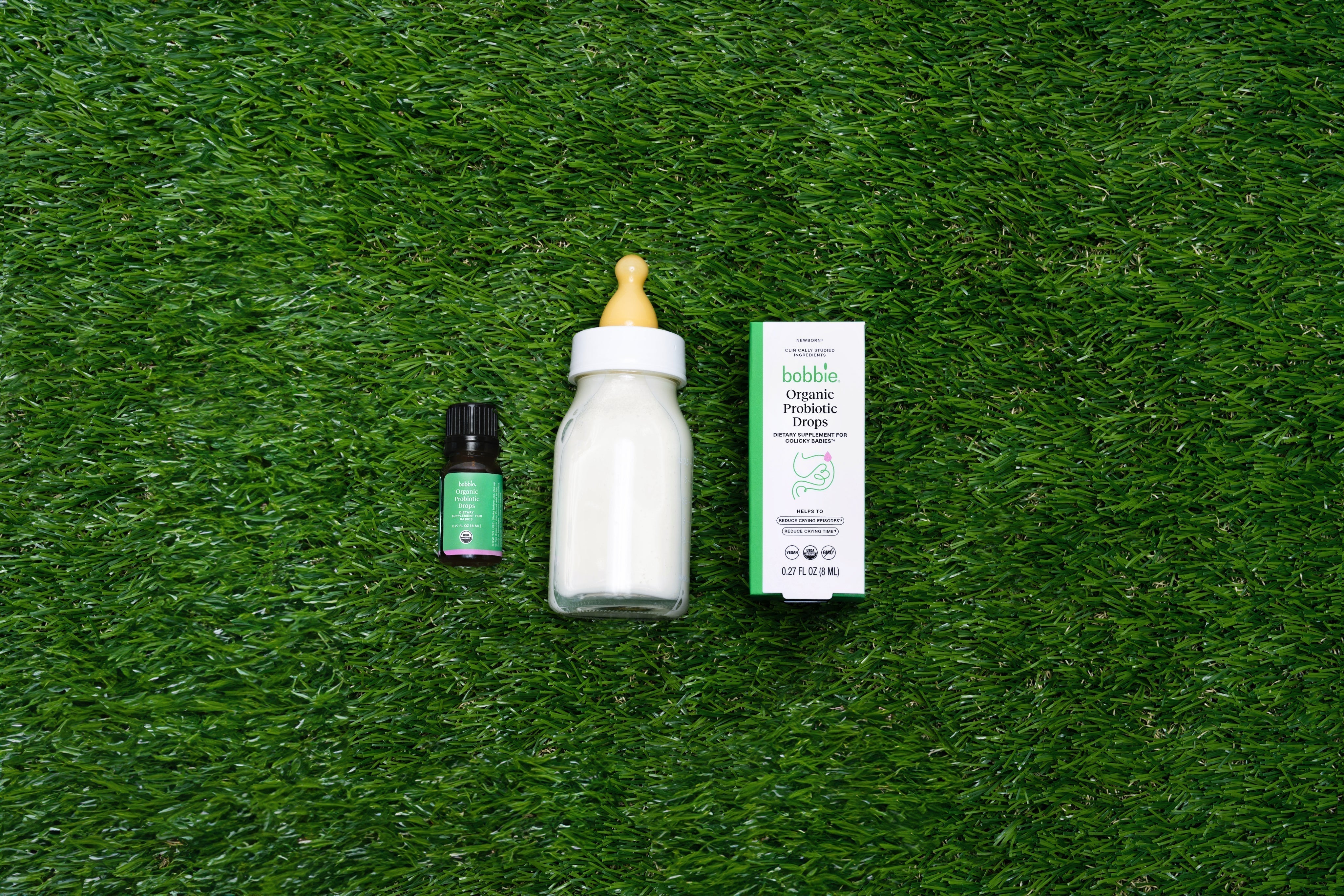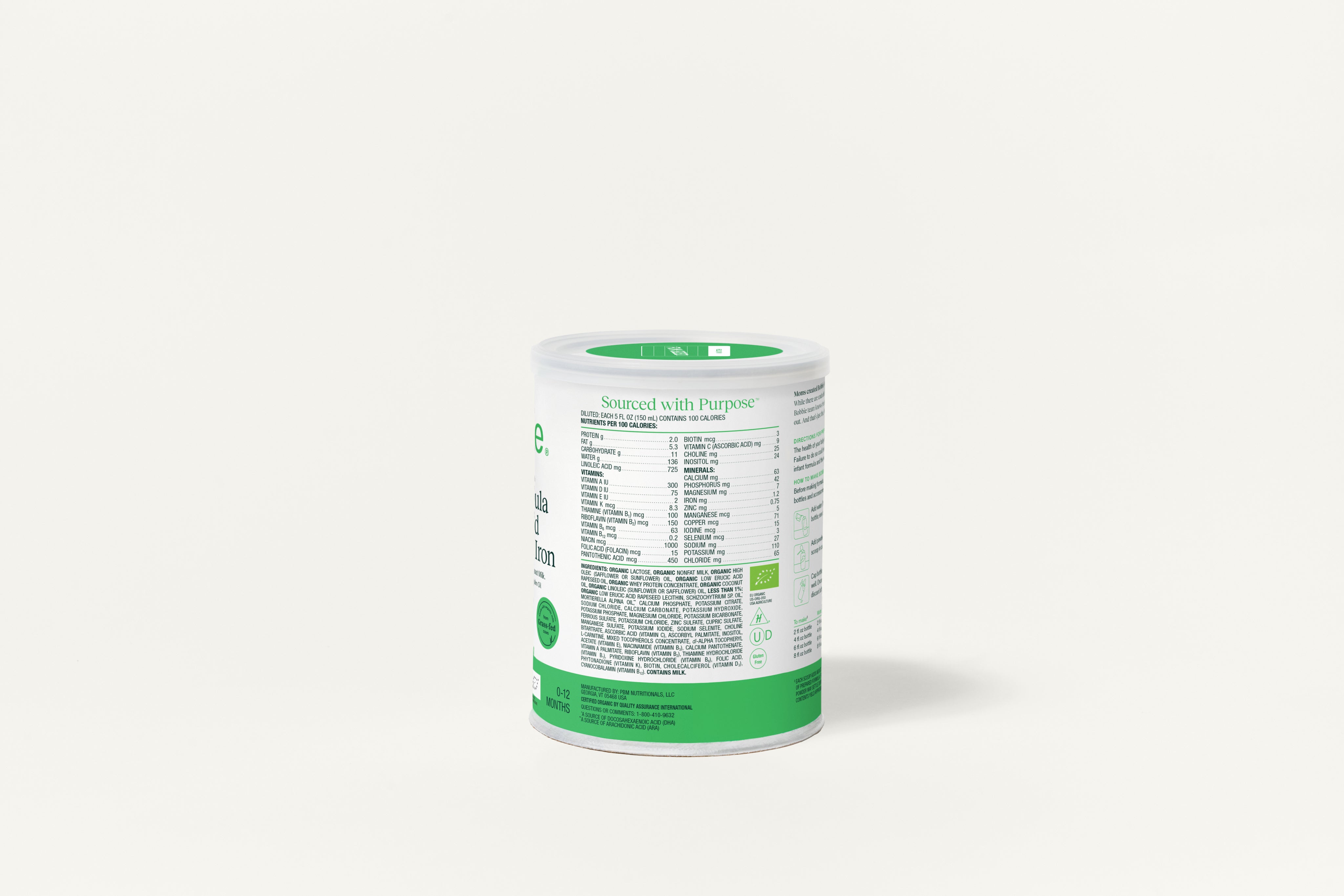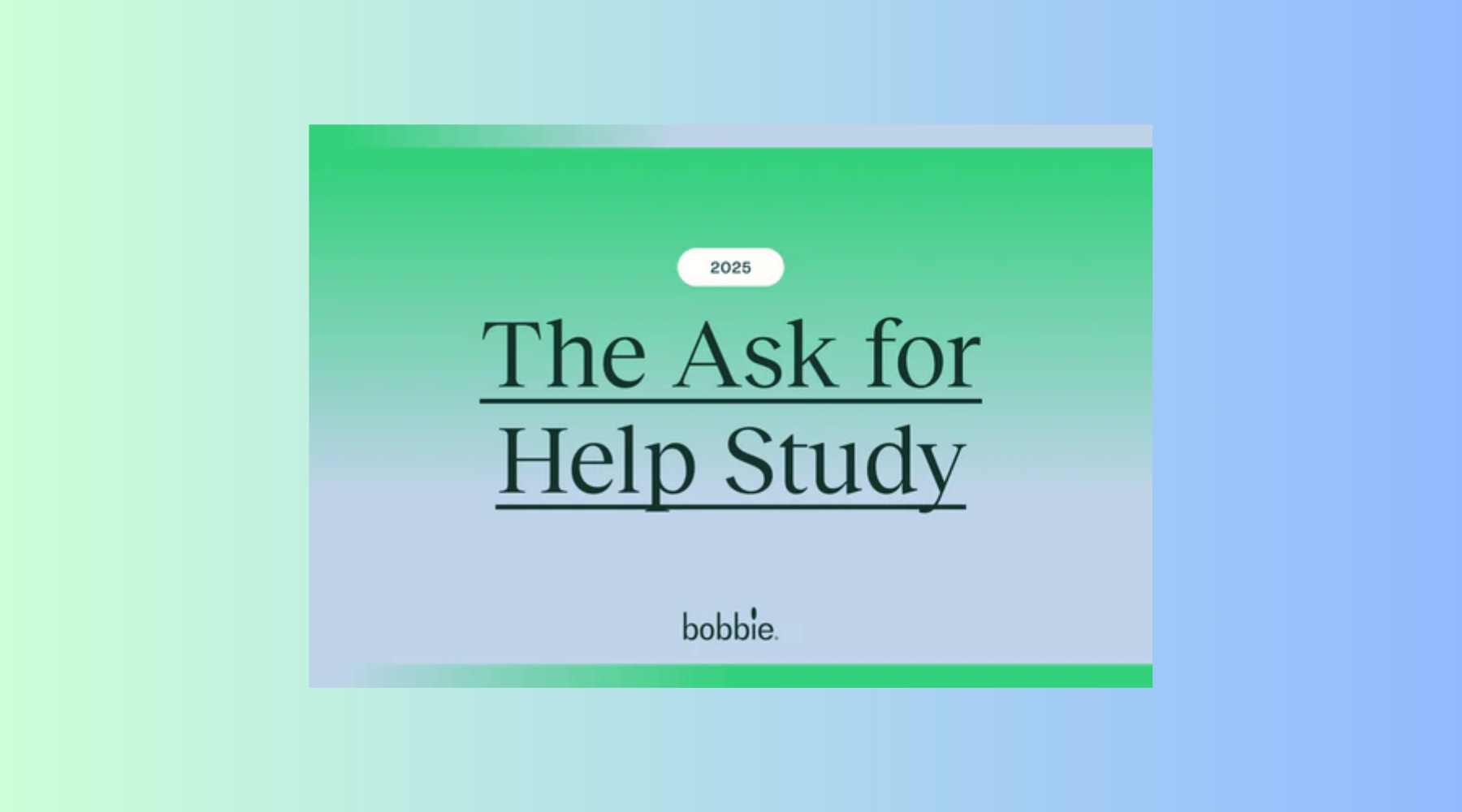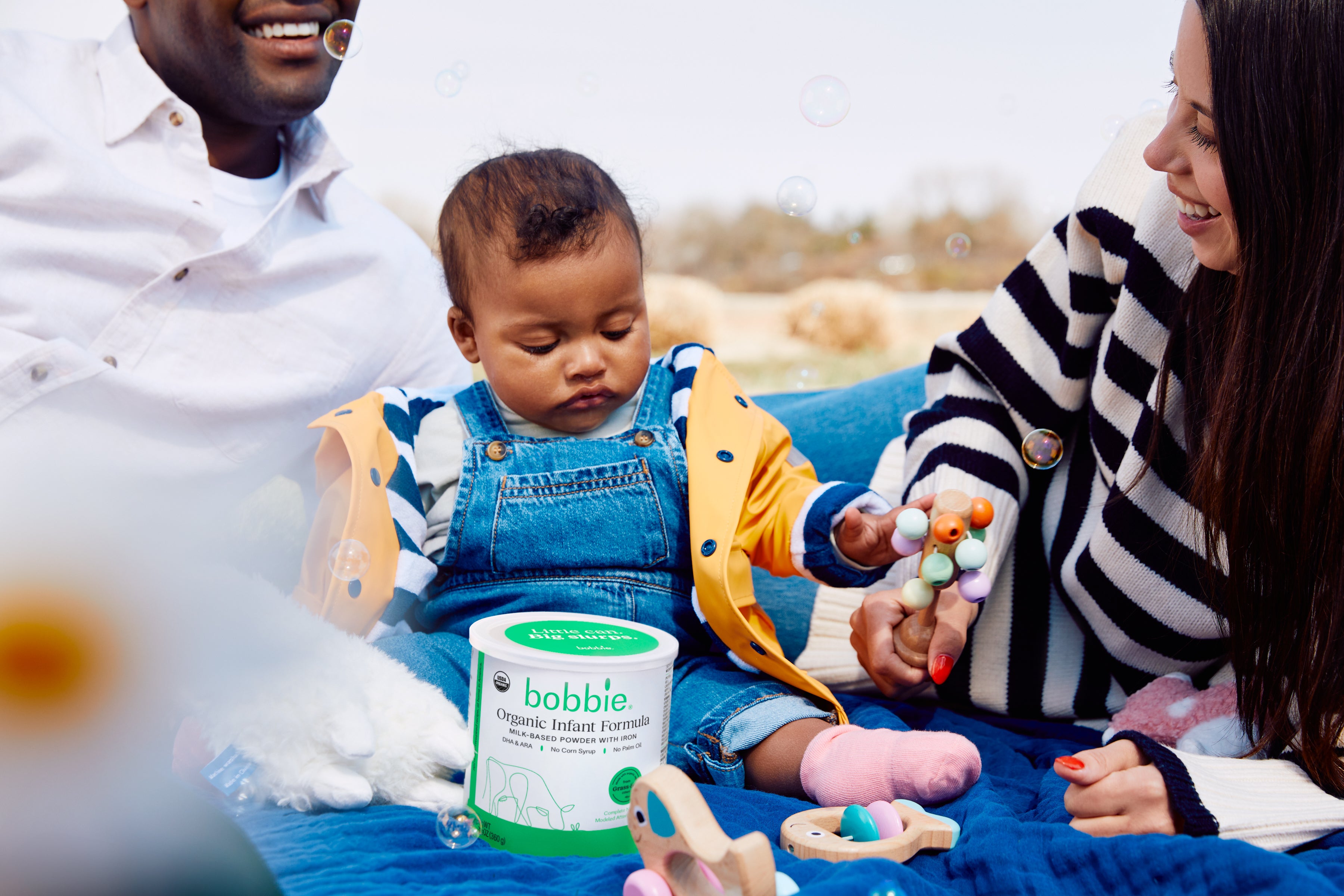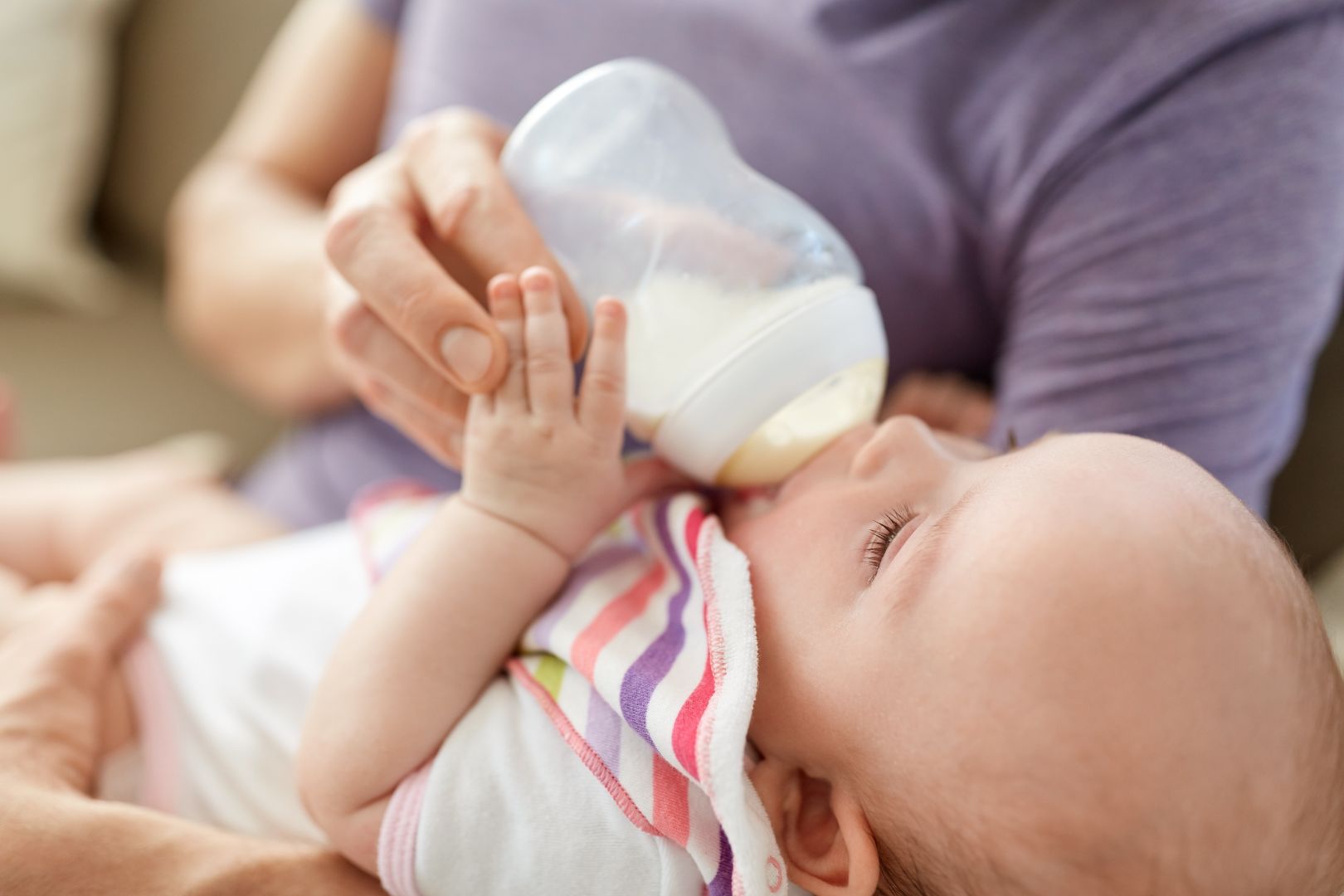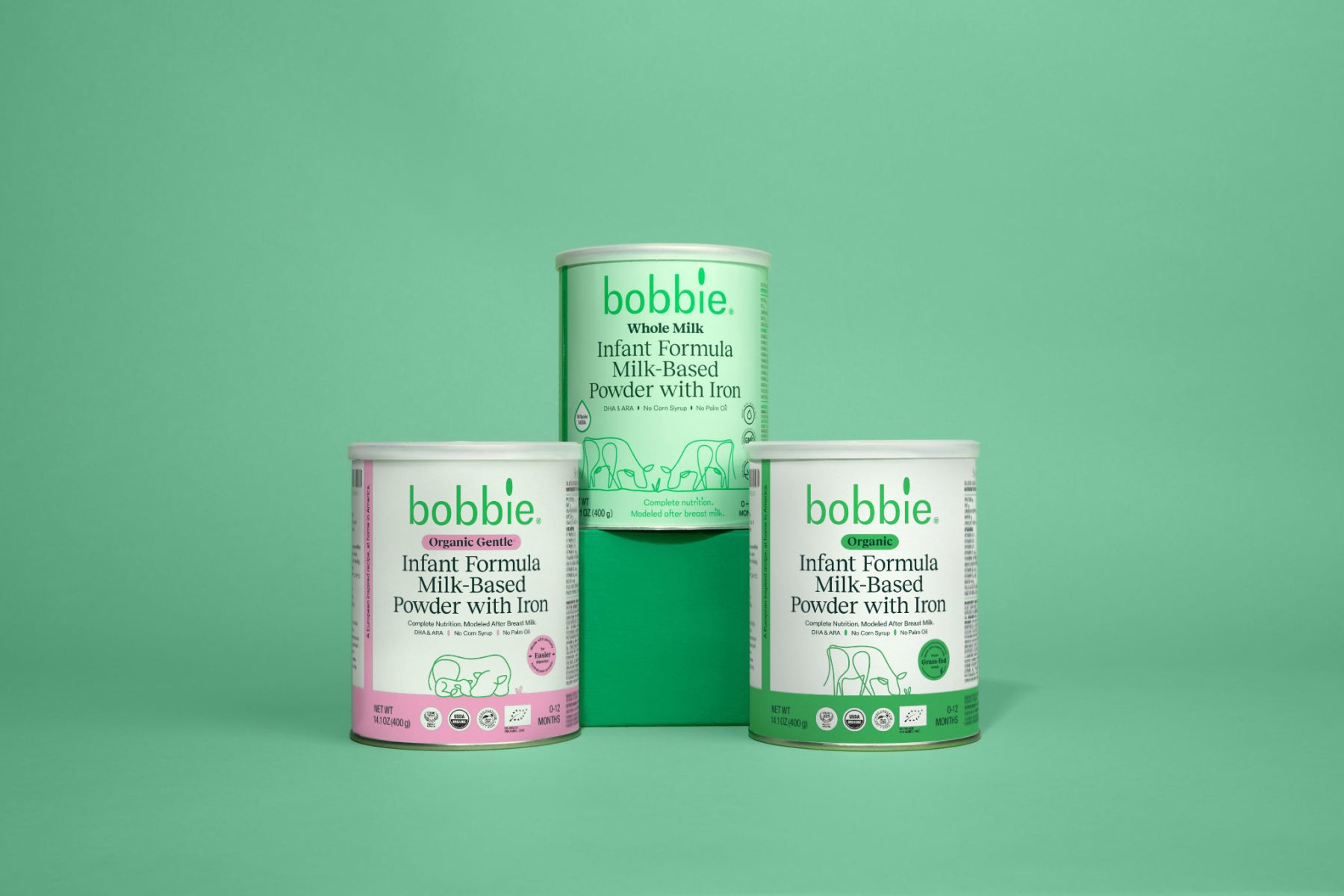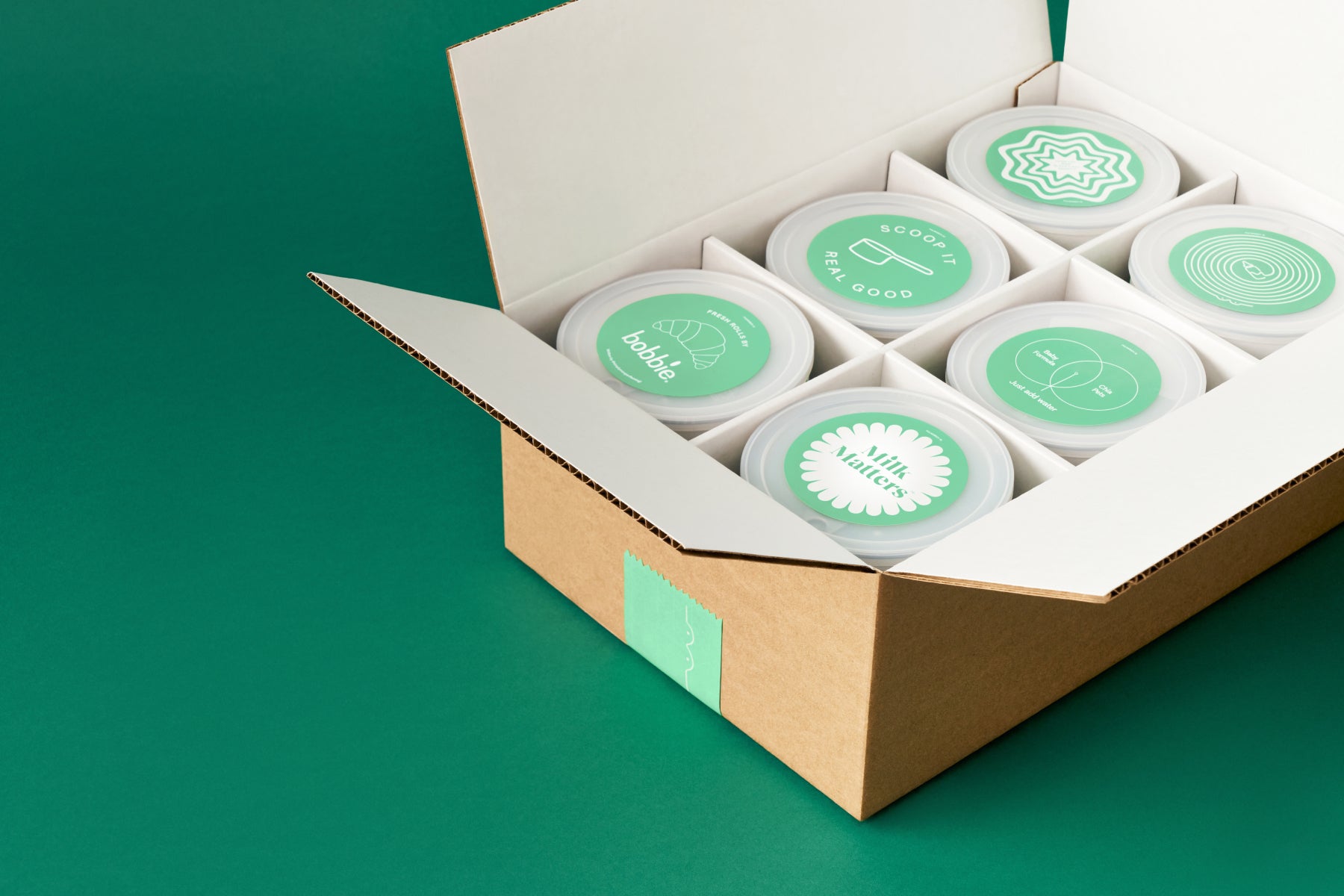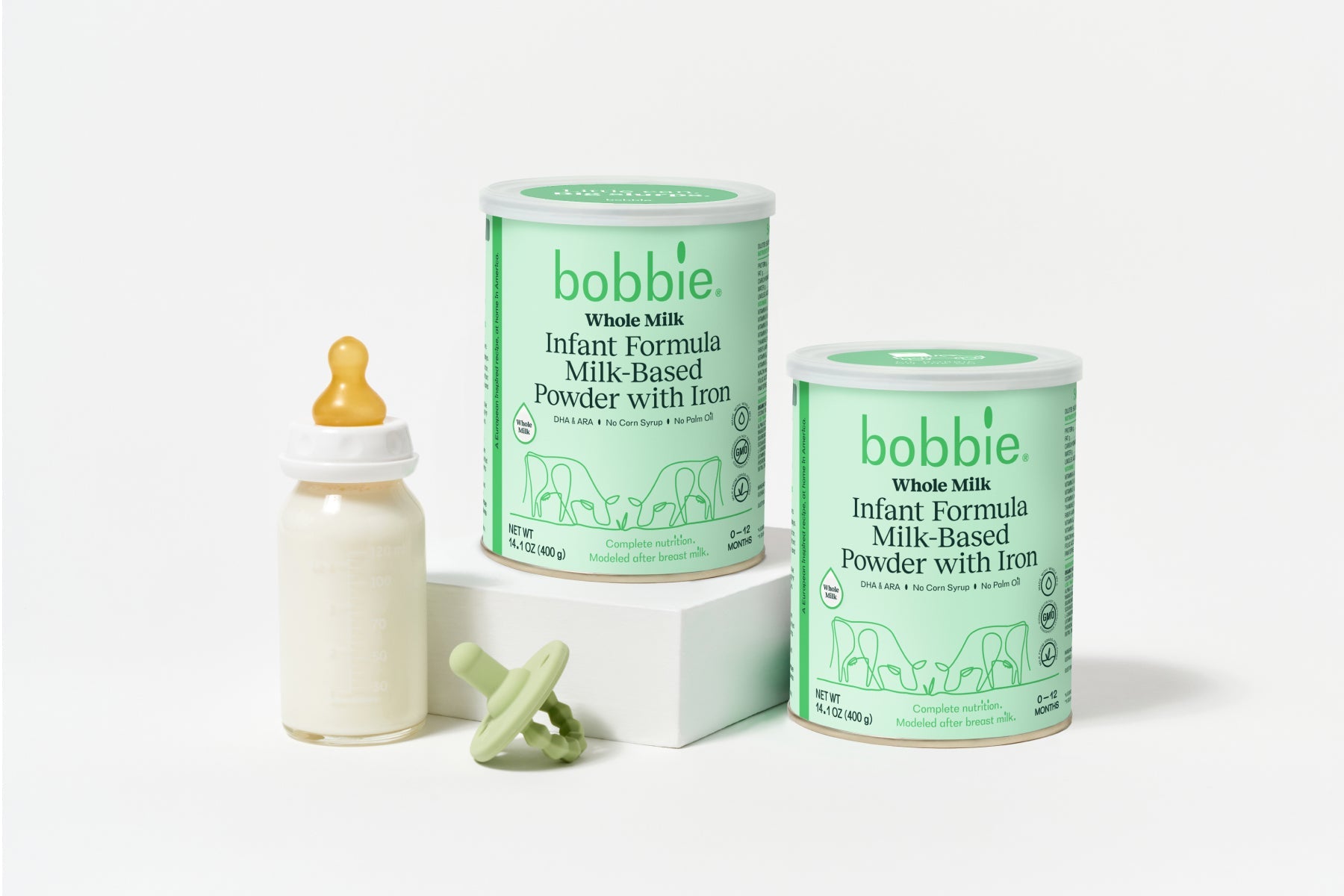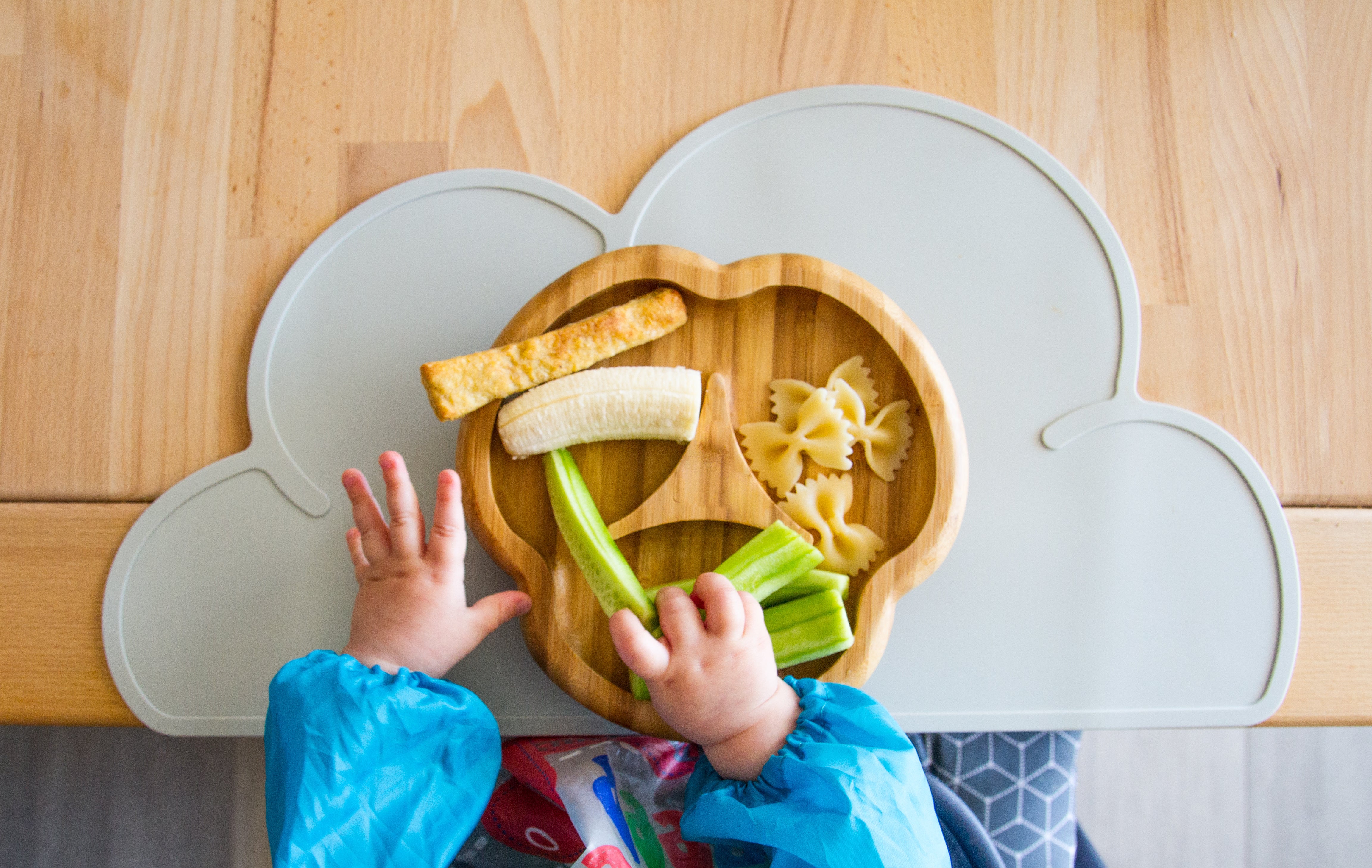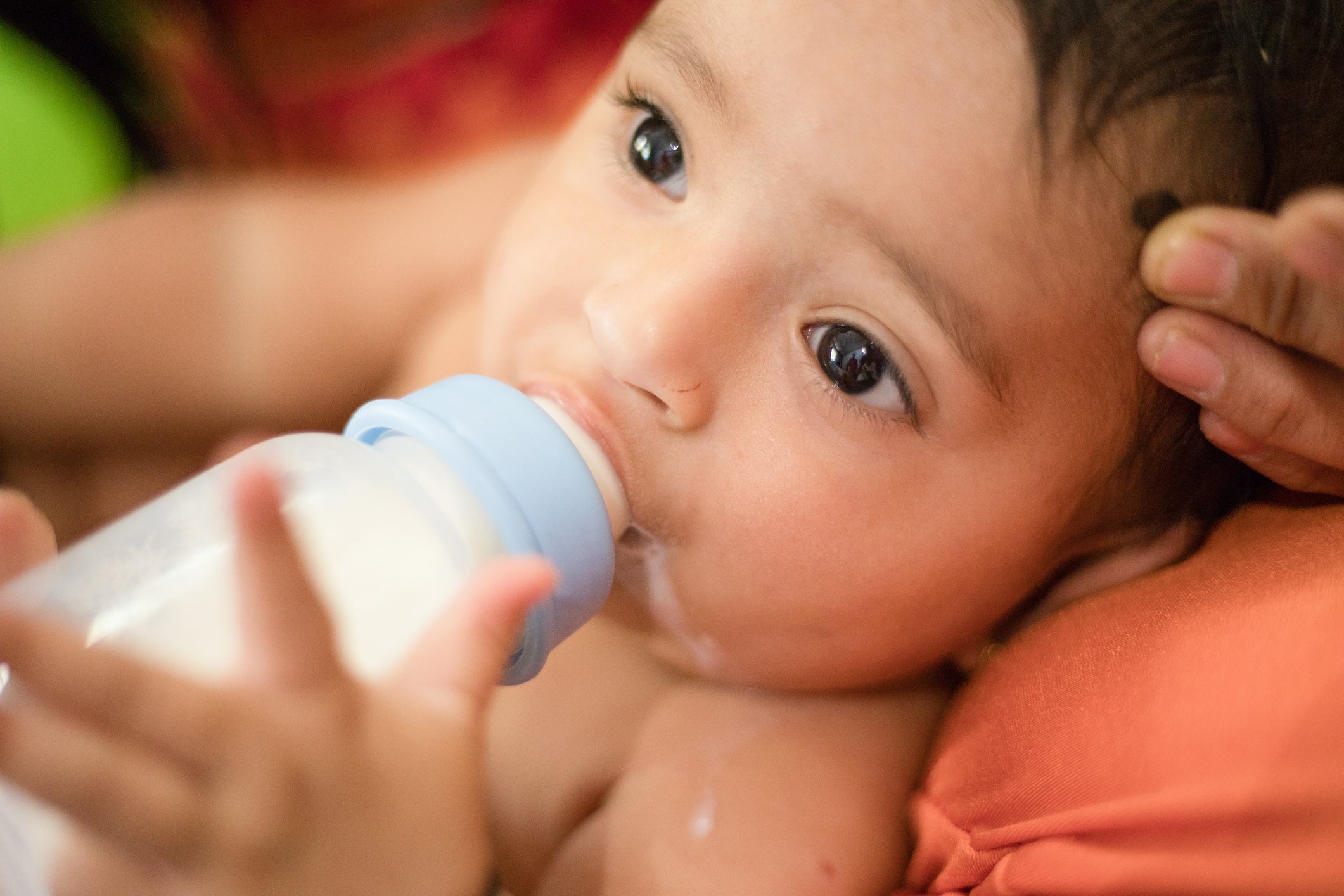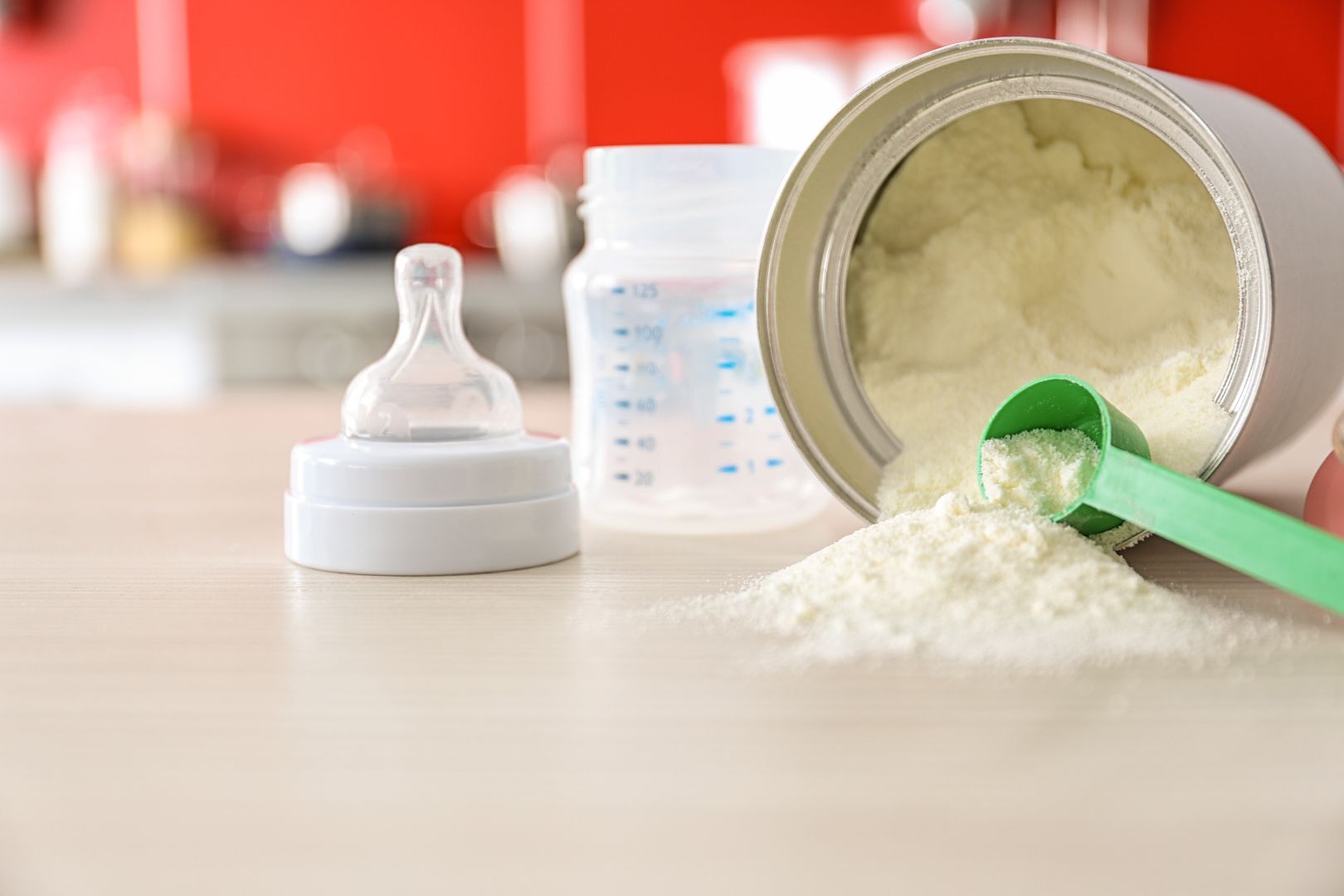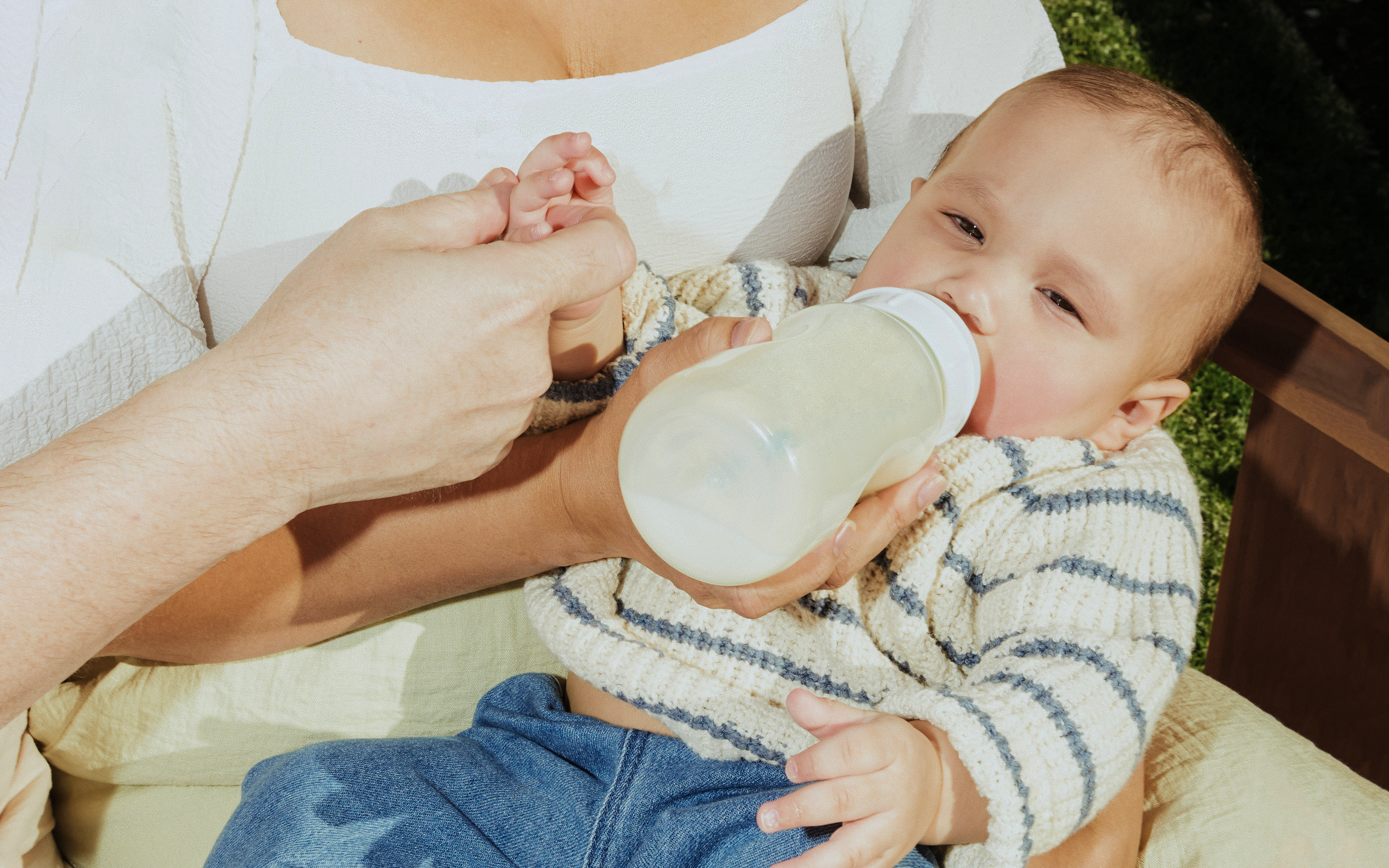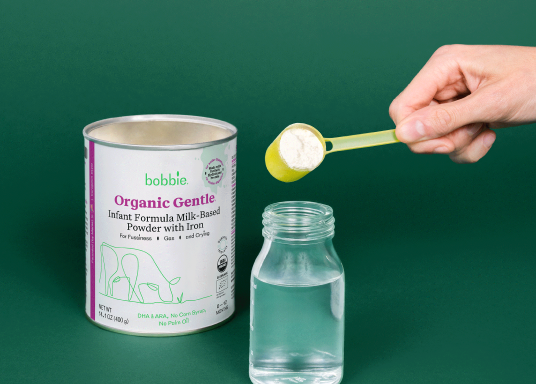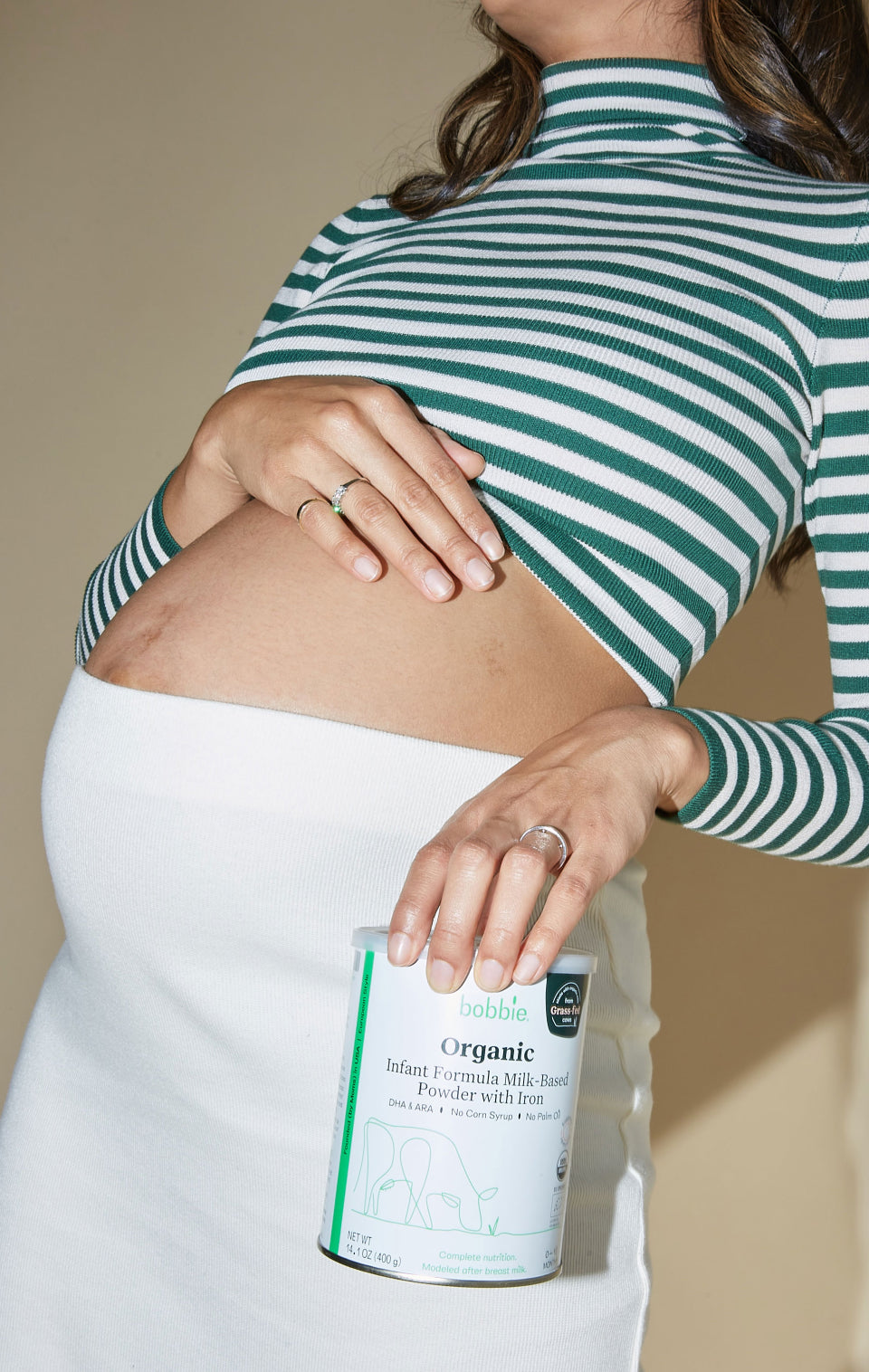Published May 12, 2025
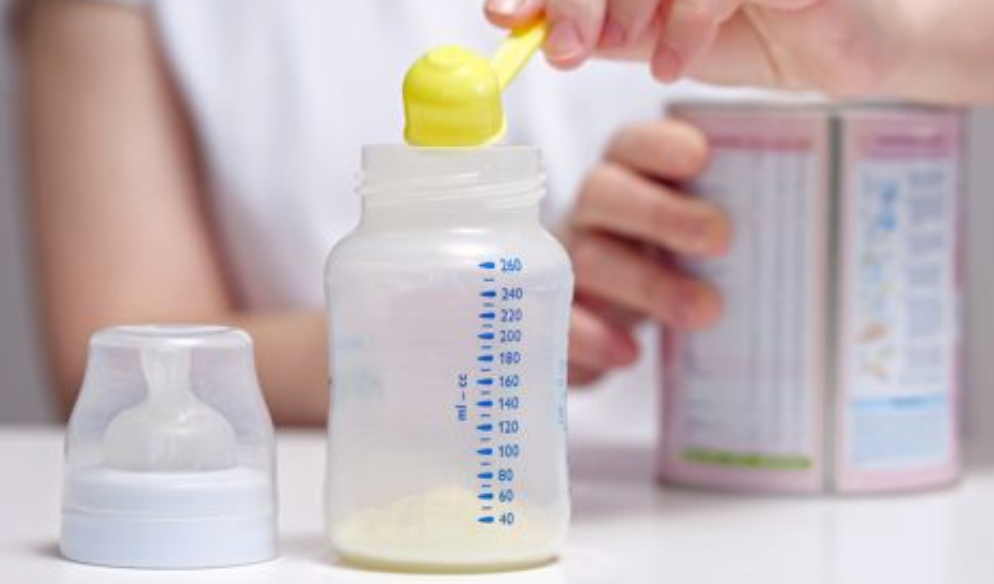
How Much Is Baby Formula?
Feeding your baby is one of the biggest (and most important) parts of early parenthood — and it comes with a price tag. But don’t worry: it can be a manageable one, especially when you know what to expect.
We're breaking down the average cost of baby formula, what affects those prices and how it compares to other feeding options. That way, you can feel confident in your plan and how you choose to feed your baby!
Average Baby Formula Costs (a Month-by-Month Breakdown)
Let’s talk dollars and ounces — because when it comes to baby formula, the costs can add up quickly. You always want the best for your baby, but “best” doesn’t always mean the most expensive option on the shelf. There are plenty of high-quality, affordable choices out there, and smart ways to save (like subscriptions or bulk buying) that can ease the load over time.
But first, here’s a look at what you can typically expect to spend by age — and what those numbers really mean for your growing baby:
|
Age |
Daily Formula Intake (Oz.) |
Est. Monthly Cost* |
Notes |
|
Newborn (0-1 mo) |
8-26 oz. |
$25–$200 |
Intake can vary widely based on birth weight. |
|
1-3 months |
17-32 oz. |
$40–$240 |
Growth spurts may increase intake. |
|
3-5 months |
20-40 oz. |
$50–$300 |
This is the peak consumption phase for many babies. |
|
6-8 months |
16-40 oz. |
$40–$300 |
Solid foods are introduced and formula feeding may slowly decrease. |
|
9-12 months |
16-32 oz. |
$40–$240 |
Gradual weaning typically begins. |
*Estimates vary by brand, formula type and feeding frequency.
Knowing these averages can help you estimate monthly costs and plan ahead. Of course, every baby is different — so consider these numbers as general guidelines to support your budgeting.
Not sure how much you need? Use the Daily Milk Calculator from the Fed is Best Foundation to determine the right amount of formula based on your baby’s needs, body weight and your breastfeeding situation.


Your go-to resource for all things new baby.
Sign up to get the scoop on feeding, sleep, poop, and so much more.
By singing up for email, you are to receive marketing emails from Bobbie and can manage your email preferences or unsubscribe at anytime
Why Are Some Formulas More Expensive Than Others?
Several factors influence how much a formula costs — and understanding them can help you make the best choice for your little one and your budget.
Ingredient Differences
Not all formulas are made the same, and that’s often where price differences begin:
-
Organic milk vs. conventional dairy: Organic formulas use milk from cows raised without synthetic pesticides, hormones or antibiotics. Because organic farming follows stricter guidelines, these formulas may cost a bit more — but many parents find the extra care behind the label reassuring.
-
DHA levels: DHA is an omega-3 fatty acid that supports brain and eye development. Formulas with higher levels of DHA can bump up the price due to the added steps in sourcing and stabilizing the ingredient.
-
Lactose vs. alternative sugars: Lactose is the natural sugar found in milk (including in breast milk!), but some formulas use alternatives like corn syrup solids, which are more affordable. Depending on your baby’s needs and digestion, this can affect both price and preference.
Specialty Needs
If your baby needs a gentle, soy-free or hypoallergenic formula, expect a slightly higher price. These specialty formulas use modified proteins and/or alternative ingredients that are more expensive to source and produce, though they can also be easier on sensitive tummies, offering comfort for both babies and parents.
Imported Formulas
European and other FDA-approved imported formulas are sometimes popular for their unique ingredient standards and nutritional approaches. However, import costs like tariffs and shipping can give parents pause, and may make these formulas a bit pricier. Fortunately, there are U.S.-manufactured formulas that follow similarly strict European-style guidelines — like Bobbie — giving parents a trusted, more accessible option.
Manufacturing and Quality Assurance
Where a formula is made and how it’s tested can affect cost. U.S.-made formulas often provide good value, but some brands — domestic or imported — invest in extra quality checks, which can add to the price but offer peace of mind for safety-conscious families.
Breastfeeding vs. Infant Formula: Cost Overview
According to the Journal of Perinatology, a year’s supply of formula can cost between $760 and $2,280, depending on your baby’s intake and the type of formula you choose. Breastfeeding often has lower out-of-pocket costs, but it isn’t free — many parents invest in pumps, storage bags, nursing bras and consultant support, plus it takes time.
That’s why many families opt for combo feeding: a flexible blend of breast milk and formula that can ease pressure, manage costs, and fit your lifestyle.
Smart Ways to Save on Baby Formula Costs
Looking for ways to stretch your budget without sacrificing quality? Here are some ideas to try:
-
Sign up for subscriptions: Many formula brands offer discounts for subscribers — Bobbie included! With Bobbie’s subscription, you can save 10% automatically, take advantage of free shipping, and enjoy the convenience of scheduled deliveries right to your door.
-
Shop bulk deals and warehouse clubs: Buying in bulk at places like Costco or Sam’s Club can cut down your per-ounce cost. Just make sure you’ll use it before the expiration date to avoid waste.
-
Use your Target RedCard: If you shop at Target, don’t forget to use your RedCard — you’ll get 5% off Bobbie Organic Infant Formula and other eligible baby essentials every time you shop.
-
Compare per-ounce prices: Instead of comparing by can size, check the per-ounce cost to really see which option gives you the most formula for your money.
-
Explore WIC program options: If you qualify, the WIC (Women, Infants and Children) program can help cover the cost of formula. You can check your eligibility here.
Note: Never dilute formula to make it last longer. While it may seem like a money-saving trick, watering down formula can be harmful and cause serious health issues. Always follow mixing instructions exactly!
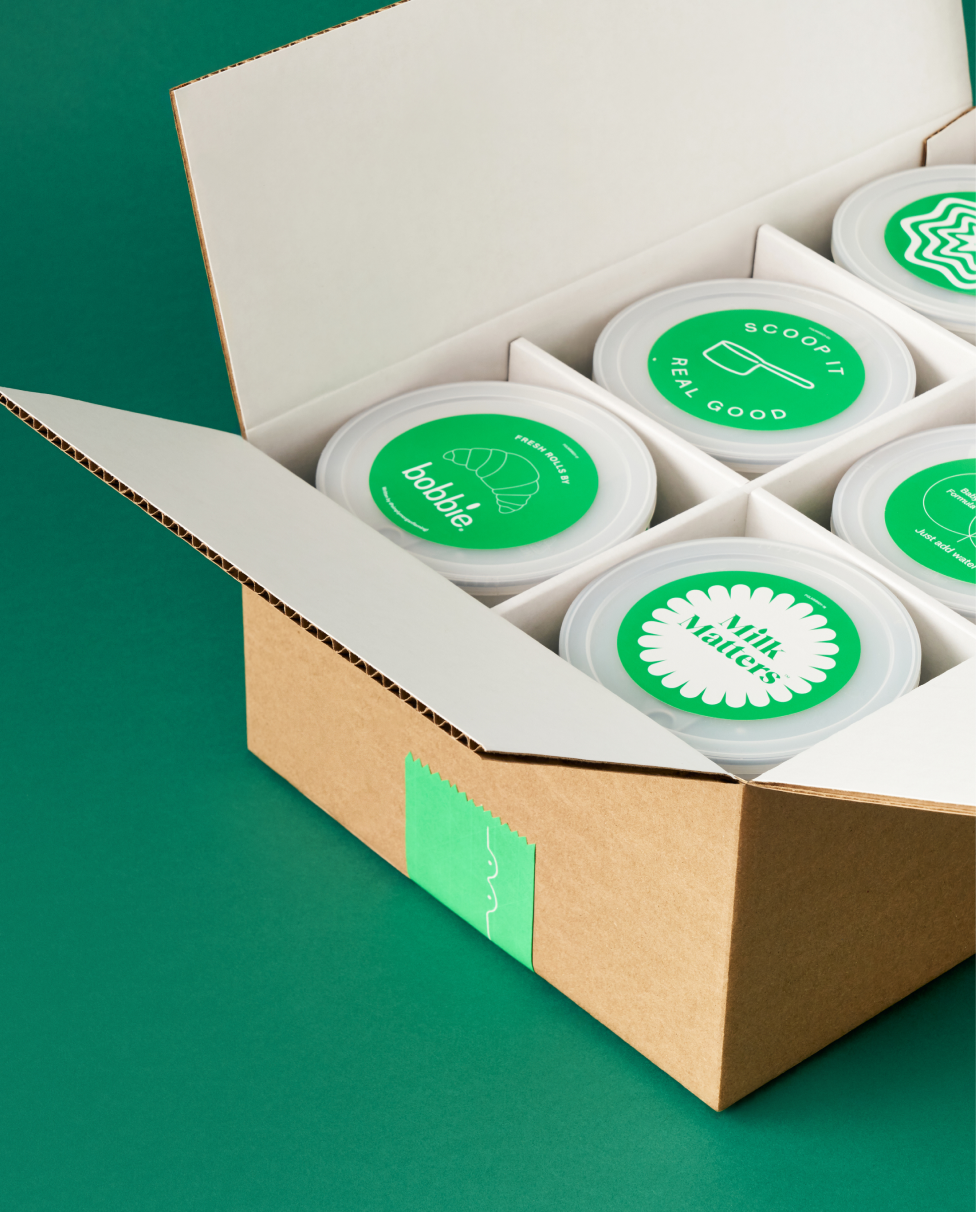
Shop Bobbie Organic Infant Formula
Bobbie Organic Infant Formula is a USDA Organic, EU-style infant formula that meets all FDA requirements. It is a complete nutrition milk-based powder modeled after breast milk and is easy on tummies. It is non-GMO and doesn't have corn syrup, palm oil, or maltodextrin. Shop Bobbie today!

FAQs About Baby Formula Costs
Still have questions? Here are answers to formula feeding FAQs about pricing, portion sizes and more ways to save:
How long does a 30-oz. can of formula last?
A standard 30-ounce can of powdered formula makes around 66 4-ounce bottles. If your baby drinks about 32 ounces a day (roughly eight bottles), that can will last about seven-to-eight days.
What are the benefits of choosing a smaller can?
Smaller cans can be a smart choice — especially if you’re combo feeding or just testing out a new brand. They:
-
Help reduce waste if you’re not using formula for every feeding.
-
Travel well and fit easily into diaper bags for on-the-go convenience.
-
Make it easier to see if your baby likes a formula before committing to a larger size.
Why is infant formula so expensive now?
Formula prices can rise due to factors like ingredient sourcing, supply chain challenges, import tariffs, and increased demand. Specialty formulas and those made with organic or added nutrients like DHA also tend to cost more because of added production steps.
Is there help available for formula costs?
Yes! Programs like WIC can help eligible families with the cost of formula, and many retailers accept EBT as a form of payment for formula. Some brands also offer discounts, coupons and subscription savings, so be sure to check for offers or ask your pediatrician about local resources.
Planning Ahead: Feeding Costs Made Simpler With Bobbie
Whether you're breastfeeding, formula-feeding or combo-feeding, remember: fed is best. And with thoughtful planning and trusted options like Bobbie Organic Formula, you can make confident, cost-savvy choices.
Subscribe to Bobbie and get 10% off every month, free shipping and expert-led virtual support. Plus, we guarantee formula availability with inflation-proof pricing for your entire journey. New to Bobbie? With recent price drops on account of our domestic manufacturing, our premium organic formula just got even more accessible.
Try the Find My Formula Quiz to get matched with the best Bobbie formula for your baby, or subscribe now to get started!
The content on this site is for informational purposes only and not intended to be a substitute for professional medical advice, diagnosis or treatment. Discuss any health or feeding concerns with your infant’s pediatrician. Never disregard professional medical advice or delay it based on the content on this page.









